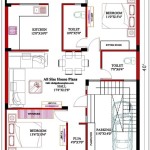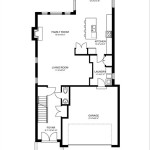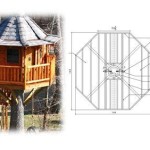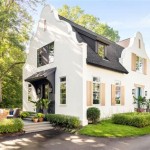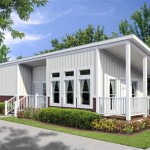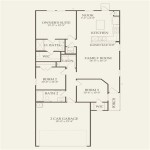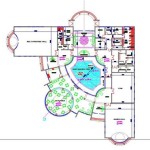Split Entry House Plans: An Overview of Design and Functionality
Split entry house plans, also known as bi-level or split foyer homes, represent a distinct architectural style that gained popularity in the mid-20th century. Characterized by a short staircase at the entrance leading either up to the main living areas or down to a lower level, this design offers a unique approach to space utilization and affordability. These homes offer a cost-effective solution for maximizing living space, particularly on smaller lots or those with sloping terrain. Understanding the core characteristics, advantages, and potential drawbacks of split entry designs is essential for homeowners considering this style.
The defining feature of a split entry home is the centrally located foyer. Upon entering, a small set of stairs leads upwards to the main living level, typically containing the living room, dining area, kitchen, and bedrooms. Conversely, another set of stairs descends to the lower level, which often houses a family room, additional bedrooms, a laundry area, and sometimes a garage. This split-level configuration effectively separates the public and private spaces within the home, offering a degree of privacy and noise reduction between different areas.
The historical rise of split entry homes is closely tied to the post-World War II housing boom. As demand for affordable housing increased, builders sought cost-effective designs that could maximize square footage on smaller, more readily available lots. The split entry design provided a practical solution, allowing for efficient use of space and minimizing the need for extensive excavation, particularly on sloping properties. This affordability, coupled with their practical layout, contributed to their widespread adoption across North America and beyond.
Key Point 1: Space Efficiency and Cost-Effectiveness
One of the primary appeals of split entry homes is their ability to maximize living space within a relatively compact footprint. By vertically separating the living areas, these designs avoid the need for expansive single-level layouts, making them suitable for smaller lots. The lower level, often partially below ground, effectively utilizes the available space without incurring the full cost of above-ground construction. This efficient use of space translates directly into cost savings for both construction and ongoing maintenance.
The partially subterranean lower level also contributes to energy efficiency. The earth surrounding the lower level provides insulation, helping to regulate temperature and reduce heating and cooling costs. This natural insulation is particularly beneficial in regions with extreme climates, where it can significantly lower energy consumption.
Furthermore, the simple architectural design of split entry homes often translates into lower construction costs. The relatively straightforward floor plan, combined with the use of standard building materials, helps to keep construction expenses in check. This makes split entry homes an attractive option for first-time homebuyers or those on a budget.
The clear separation of living spaces also helps in managing the home's environmental control. Heating and cooling can be more effectively directed to specific zones, optimizing energy usage and reducing overall utility bills. The ability to control temperature in different areas of the house independently adds to the energy efficiency and comfort of the home.
Key Point 2: Functional Separation of Living Areas
The split-level design inherently creates a functional separation between the public and private areas of the home. The upper level typically houses the main living areas, such as the living room, dining room, and kitchen, providing a dedicated space for entertaining guests and socializing. The lower level, on the other hand, often functions as a more private retreat, housing bedrooms, a family room, and a laundry area. This separation of spaces helps to reduce noise transmission and create a more relaxing environment in the private areas of the home.
The placement of the garage in the lower level, a common feature of split entry homes, further enhances the functionality and convenience of the design. Direct access from the garage to the lower level provides easy entry into the home, particularly during inclement weather. This also allows for a designated entry point for family members, separating them from the formal entrance used for guests.
The separation of living areas also allows for greater flexibility in how the space is used. The lower level can be easily adapted to serve various purposes, such as a home office, a recreation room, or a guest suite. This adaptability makes split entry homes suitable for a wide range of lifestyles and family needs.
The central foyer acts as a natural transition zone between the two levels. It provides a clear visual separation while also serving as a convenient point of access to all areas of the home. The foyer's accessibility from both the upper and lower levels enhances the overall flow and functionality of the house, making it easy to navigate between different living spaces.
Key Point 3: Considerations and Potential Drawbacks
While split entry homes offer numerous advantages, it is crucial to consider the potential drawbacks before making a purchase. One common concern relates to the staircase located at the entrance. For individuals with mobility issues, such as elderly persons or those with disabilities, navigating the stairs can be challenging. This accessibility limitation may be a significant factor to consider.
Another potential drawback is the perceived lack of natural light in the lower level. Since the lower level is often partially below ground, natural light may be limited, particularly in smaller windows. This can create a darker and potentially less inviting atmosphere in the lower level. Careful consideration of window placement and lighting design is essential to mitigate this issue.
Furthermore, the architectural style of split entry homes may not appeal to everyone. The mid-century design aesthetic can feel dated to some buyers, and the somewhat boxy exterior appearance may lack the curb appeal of more contemporary architectural styles. However, exterior renovations and landscaping can be implemented to improve the aesthetic appeal of the home.
Sound transmission between the upper and lower levels can also be a concern. While the separation of spaces provides a degree of noise reduction, sound can still travel through the staircase and the floors. Proper insulation and soundproofing measures can help to minimize noise transmission and improve the acoustic comfort of the home. Furthermore, the layout of the house, with the entrance being a central hub, can sometimes lead to increased traffic and noise within the foyer itself.
Resale value should also be a consideration. In some markets, split entry homes may not be as desirable as other architectural styles, potentially affecting their resale value. However, the affordability and functionality of split entry homes can still make them an attractive option for certain buyers, particularly those seeking a cost-effective and practical living space.
Future renovations and expansions can be more complicated with a split-entry home. The existing structure needs to be carefully considered when adding new additions or modifying the layout. The split levels can sometimes limit the flexibility of design options and increase the complexity of the construction process. It is therefore advisable to seek professional architectural guidance before undertaking any major renovation projects.
Finally, maintaining consistent climate control throughout a split-entry home can sometimes be challenging. The distinct temperature differences between the upper and lower levels may require adjustments to the HVAC system to ensure optimal comfort and energy efficiency. Zoning systems and programmable thermostats can help to address this issue and create a more balanced climate throughout the house.
Therefore, careful consideration of the design's strengths and limitations is necessary to ensure that a split entry house plan meets the specific needs and preferences of the homeowner. While they offer many benefits in terms of cost and space efficiency, the specific site conditions, lifestyle, and personal preferences should also be taken into account.

Familyhomeplans Com Plan Number 45253 Order Code 01web Split Level House Plans Modular Home Floor

Split Level House Plans And Foyer Floor

Split Entry House Plans Page 1 At Westhome Planners

4 Bedroom Split Level House Plan 2136 Sq Ft 2 Bathroom

Pin On Floor Plans

Split Level House Plan With Drive Under Garage 42591db Architectural Designs Plans

4 Bedroom Split Level House Plan 2136 Sq Ft 2 Bathroom

Split Level Home Designs Stroud Homes

Beautiful Contemporary Style House Plan 5105 The Millfield Lodge

Pin On Housey Homey Things


